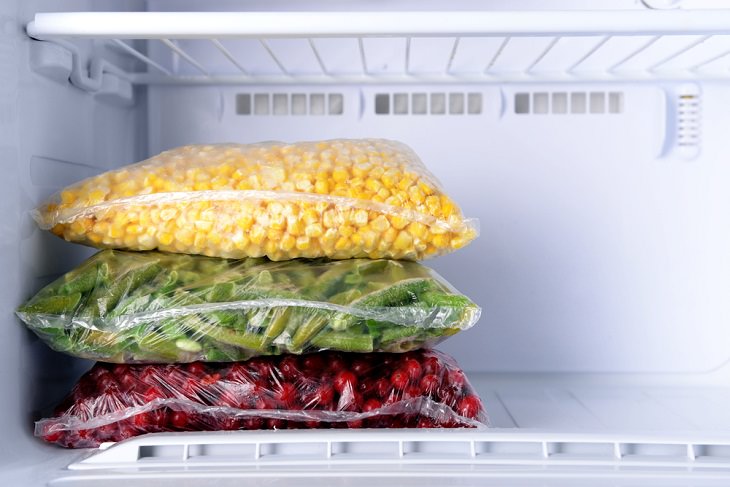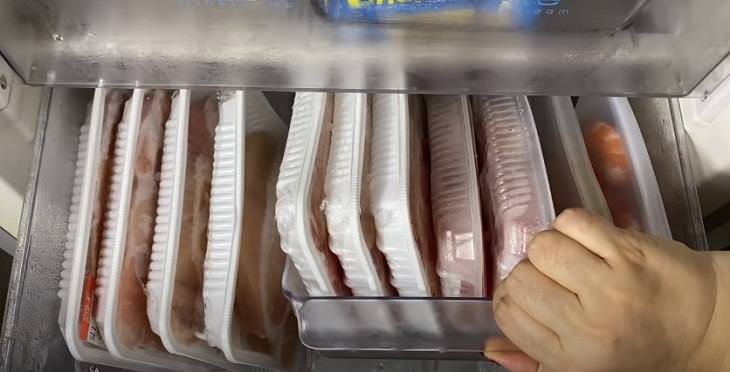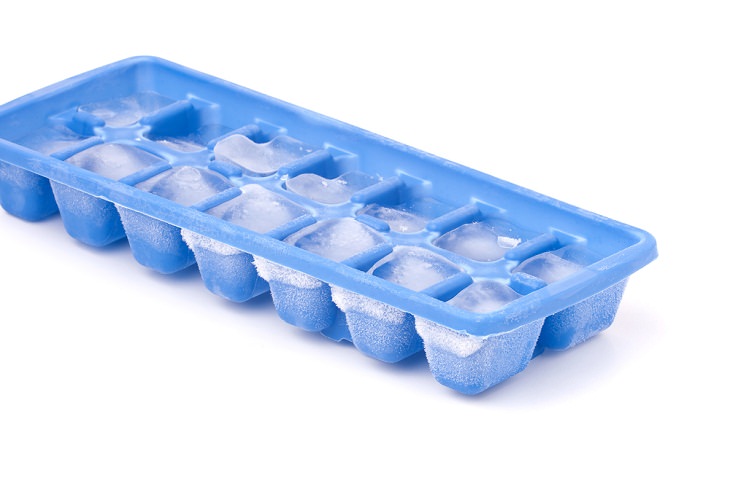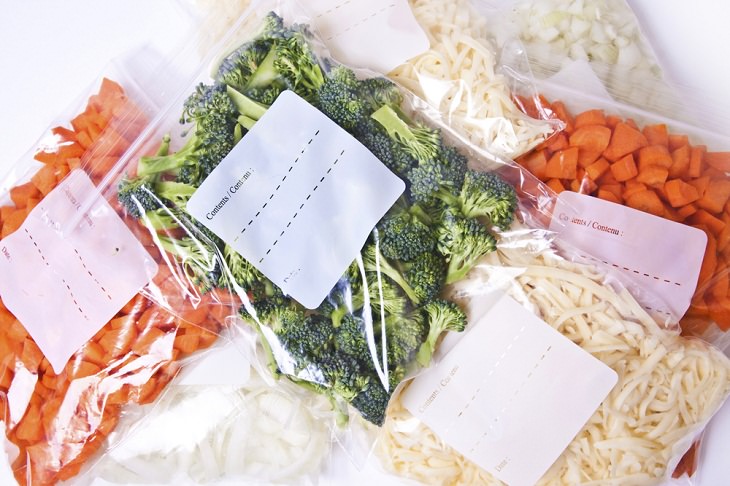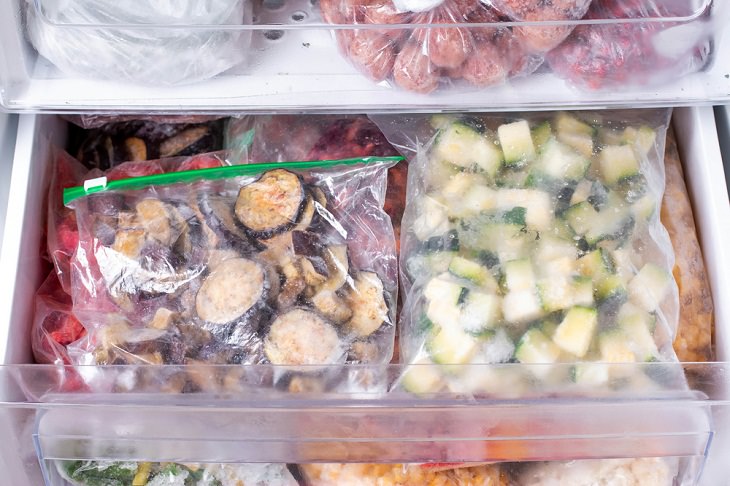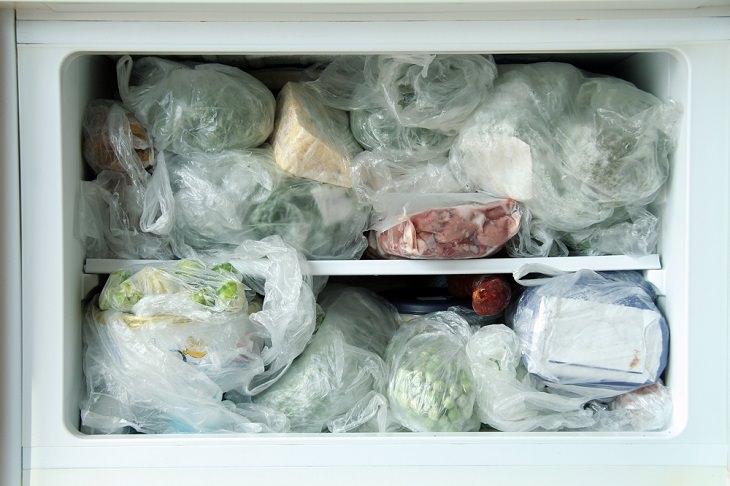Freezer bags are great for storing stuff, as they are easier to stack or organize. They also save you plenty of space in the freezer because boxes tend to occupy plenty of unnecessary space. Whenever possible, try and stack your freezer bags as flat as you can, since stacking the bags upright eventually makes the food settle into a chunky blob at the bottom, and it will take up more area.
Fill a bag with food and squeeze all the air out of it. Now, lay the bag flat in your freezer, separating it from other bags with pieces of cardboard to stop them from clinging to each other.
2. Start using freezer bins
If your freezer doesn’t have built-in compartments, then invest in some plastic bins. Even though they are plastic, these bins are freezer-safe, and they can help you sort and categorize frozen. They don’t crack and will serve you for a long time.
Use large bins if you have a big family and keep things like frozen vegetables or fruit together. These bins can be used to create separate sections for specific products. Choose the ones with cutout handles, and don't forget to label them.
3. Ditch the ice cube trays
Every freezer has a couple of ice cube trays that take up a lot of space. But how frequently do you actually use them? Many modern refrigerators have built-in ice makers. If you have one of those, you should really get rid of the bulky ice cube trays from your freezer.
Even if you don’t have an ice maker, chances are you're only using the ice cube trays in the summer months. If you use the ice cube tray only occasionally, consider storing it outside of the freezer when you're not using it. You can also get rid of it altogether and opt for buying a bag of ice whenever you need it and give your freezer some breathing space.
4. Label all items
Make a habit of not putting anything inside your freezer without labeling it first, and we do mean every single item. Most tend to forget what foods were packed inside each bag and when after just a couple of months. You could be searching for the bag filled with risotto, let's say, but end up pulling out the one with cookie dough. Labeling items takes out all that guesswork. Write down the contents and the date on each bag. This way, you won’t have to rely on your memory while searching for safe-to-eat items in the freezer.
Peel-and-stick freezer labels that can endure the cool temperatures and frost in the freezer are ideal for this task, but you can also make do with a permanent marker and painter's tape to label the items.
5. Store similar items together
Develop a system of storing similar items together. This will make it much easier for you to find what you need in a stuffed freezer. For example, start storing fruits in one drawer and keep the meat and frozen vegetables in their own dedicated sections. Once you make this into a habit, you will notice that you know exactly where everything is in the freezer. and much time will be saved during cooking.
Tip: Rotate items as you put them in the freezer. Keep the older freezer meals at the front and the newer ones in the back. When you are grabbing something (and you have multiples of it in the freezer), make it a point to pick the older items first. This way, you won’t have to worry about foods going bad.
6. Declutter the freezer regularly
When was the last time you decluttered your freezer? Check and see if the leftover meat from months ago is even edible at this point. Chances are, you'll find plenty of expired food that's simply eating up all that freezer space. That’s why a regular clean-out of the freezer is necessary. Just throw out the stuff you don’t use and utilize that space for keeping something better.
Declutter your freezer at least twice a year and make sure that you don’t keep anything that is more than 6 months old. During the declutter, you should also defrost and clean the freezer - this will help you get rid of any build-up and may free up even more space.
Share these tips with your friends and family...

